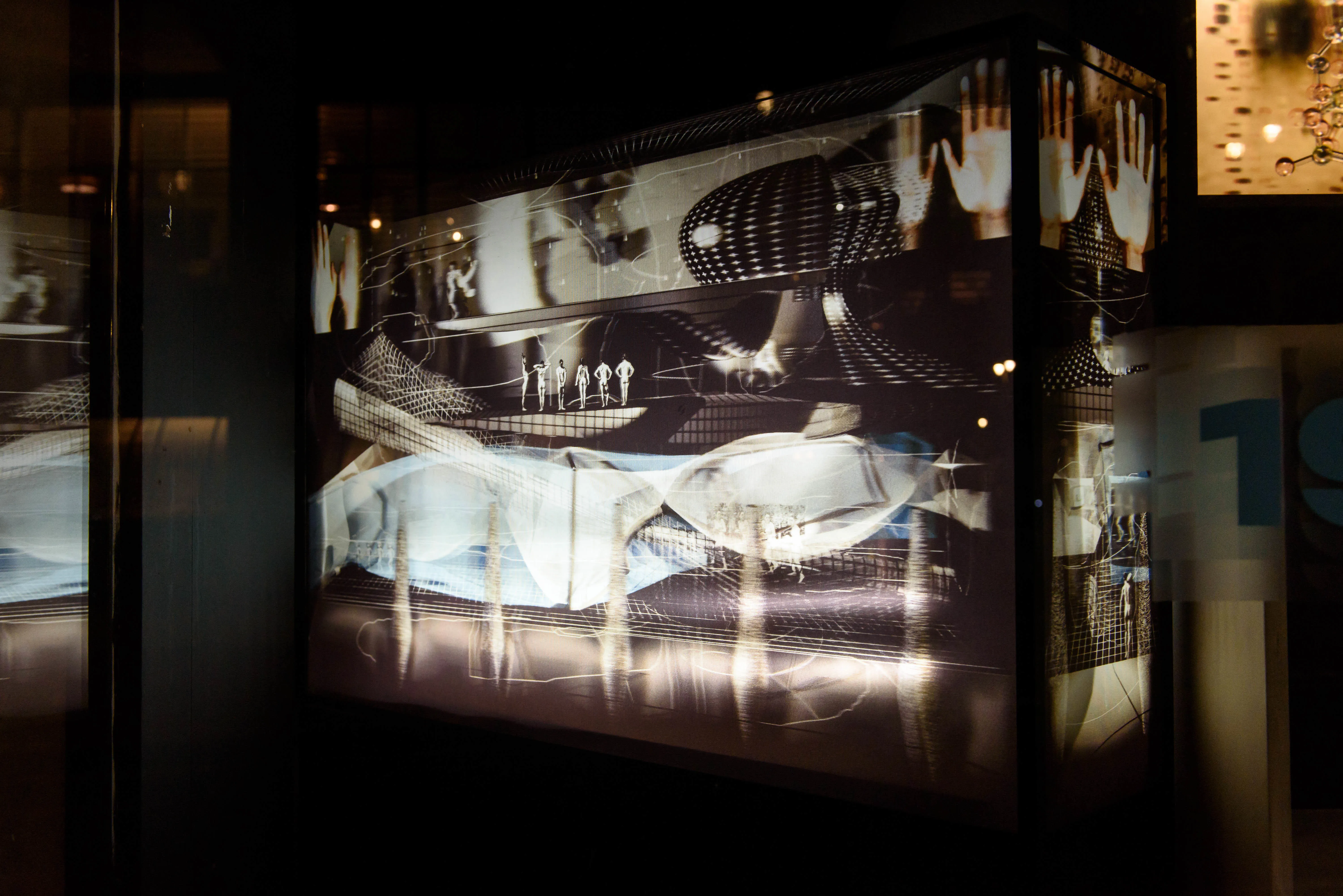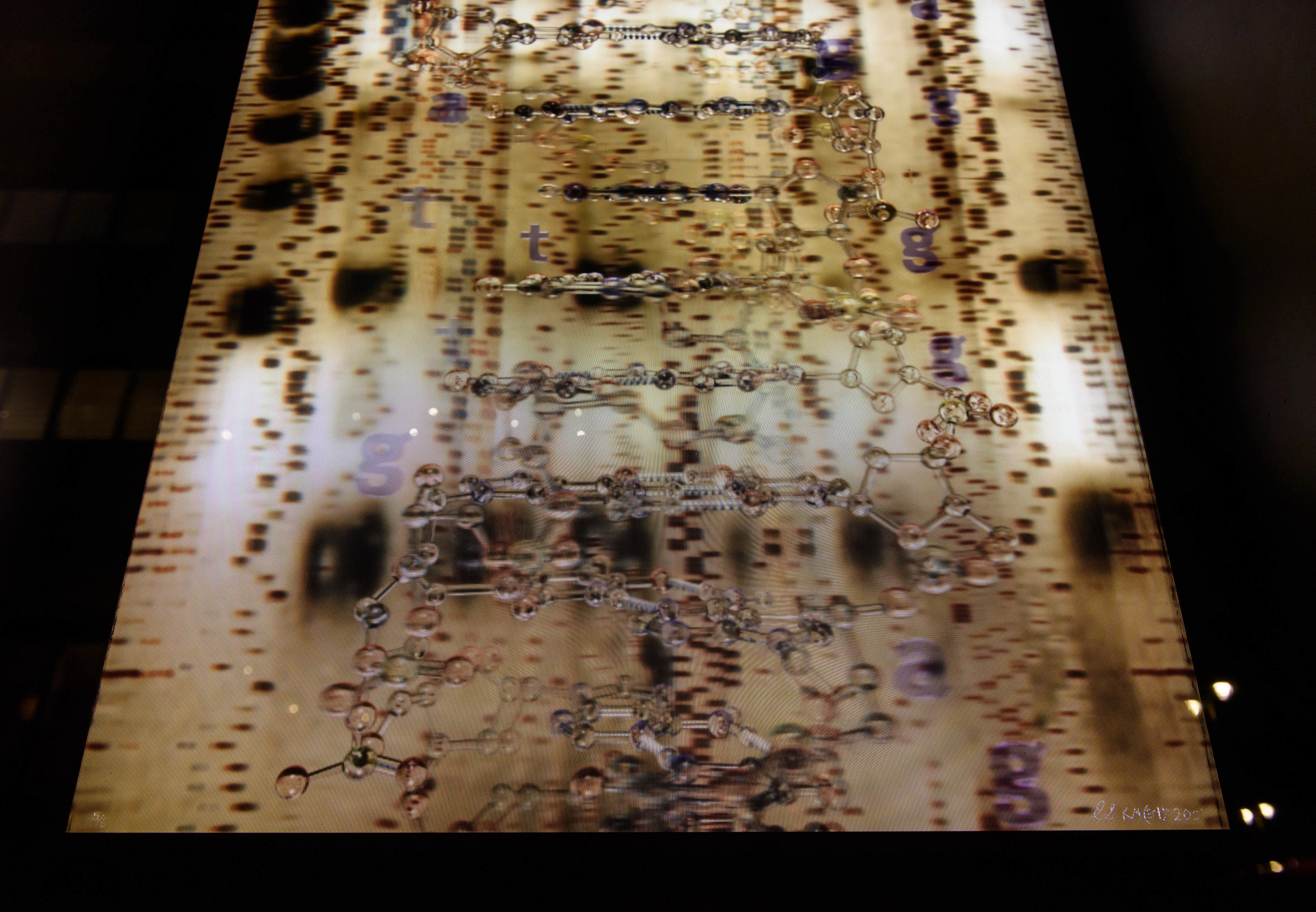Ellen Sandor
In the 1980s, artist Ellen Sandor began creating immersive digital installations which she refers to as the daguerreotypes of virtual reality. She coined the term “PHSCologram” [scol-o-gram] to describe these computer-generated images that combined elements of photography, holography and sculpture. These early experimentations of using virtual cameras in digital environments are the foundational basis of today’s ‘CGI’ productions.
We exhibit two later examples of these:
1a. Townhouse Revisited, 1999
PHSCologram Sculpture: HP/3M print, Kodalith, Plexiglas 25 x 10 x 40 inches
Ellen Sandor & (art)n: Fernando Orellana, Nichole Maury, Todd Margolis, and Janine Fron
Credits: Thomas J. McLeish
Created for "Townhouse", an architectural competition sponsored by the Graham Foundation. Townhouse Revisited (1999) addresses issues of the body, public space, and touch in the architecture of virtual reality. The work was created in response to such questions as: if hard matter and gravity offer no impediment in virtual reality, what then will meeting, working and playing in spaces look like there?

1b. Cryptobiology: Reconstructing Identity, 2001
Virtual Photograph/PHSCologram, Kodalth, Plexiglas, 40 x 30 inches
Ellen Sandor & (art)n: Keith Miller and Fernando Orellana
Credits: Kathleen Helm-Bychowski, Ph.D. Assistant Professor, Department of Chemistry, DePaul University. Special thanks to Stephan Meyers
In Cryptobiology: Reconstructing Identity (2001), the glass DNA double helix in the foreground depicts type B DNA. This particular section was taken from the human DNA sequence coding for a protein called lysozyme. This enzyme breaks open the cell walls of some types of bacteria, and is part of our defence against infections. It was the first enzyme whose 3D structure was determined by X-ray crystallography. The sepia-toned images in the background and the vertical strips staggered throughout the image are actual images of DNA fingerprints.

